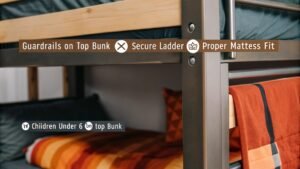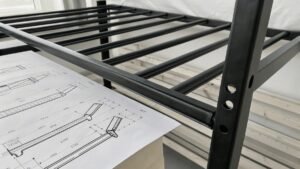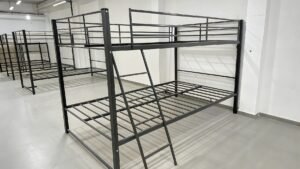Still struggling with flimsy bunk beds that squeak, wobble, or break in transit? We manufacture heavy-duty, 1.0mm-thick KD bunk beds tailored for export – 220 sets/40HQ, EN1725 certified, and built to last in staff housing, dorms, and hostels.
We don’t just make one type of bunk bed — we build the structure that fits your specs, your market, and your logistics plan. Below are our most requested bunk bed variants — all made with 1.0mm thick steel tubes and KD structure for export.








